When the disputed election of 2000 ended with the Supreme Court’s decision on December 12, it effectively shortened the presidential transition to less than fifty days and complicated the incoming administration’s personnel problems. Chief among George W. Bush’s immediate hiring decisions was the choice of senior White House staff, those advisers with whom he would have the most day-to-day contact. Selecting an ideal White House staff is confounded by a host of factors: satisfying the president-elect’s personal preferences, honoring political obligations, finding experts with the appropriate ideological hue, and achieving diversity goals. While these were Bush’s initial goals, the terrorist attacks of September 11, 2001, required instant adjustments that resulted in structural, procedural, and staff changes.
This article examines Bush’s first crack at assembling his White House and assesses its early performance as well as the staff and structural changes made in the wake of the terrorist attacks. In an effort to gain perspective on the Bush record, we compare his staff to the initial staffs of his three immediate predecessors—Bill Clinton, George H.W. Bush, and Ronald Reagan. More specifically, we examine appointments to the Executive Office of the President (EOP), including such senior staff members as the national security adviser and the director of the Office of Management and Budget.
The conventional wisdom was that President Bush hired an older, wiser set of advisers than President Clinton, who had rewarded “the kids”—hard-working, youthful campaign staffers (Stephanopoulos 1999, 148; Houston 1993, 22). Furthermore, while Clinton worked hard to assemble a team that “looked like America,” Bush hired establishment Republicans, particularly those with a conservative bent. However, staff biographies published in the National Journal reveal remarkable similarity between the two administrations. Adding Presidents George H.W. Bush and Ronald Reagan into the comparison provides a long-term look at presidents’ initial staffing, revealing additional similarities as well as important differences.
This article identifies the unique features of President Bush’s staffing organization as well as recent additions. Part two will discuss presidents’ first attempts to staff the White House from 1981 through 2001 and demonstrates key demographic characteristics and concludes with an evaluative discussion of the Bush operation.
Inaugural Innovations
Although President Bush’s staff possessed qualities similar to those of his predecessors, he imposed his own ideas about running a White House by making structural changes within the EOP, reflecting his administration’s priorities, goals, and general approach to governing. He began his term by adding two new units: the Office of Strategic Initiatives (OSI) and the Office of Faith-Based and Community Initiatives (OFBCI). He bolstered the Office of the Vice President, and his cabinet was given both standard and untraditional functions (Nakashima and Milbank 2001, A1). The events of September 11, 2001, additionally imposed various structural and procedural changes that affected cabinet and White House staff Each innovation represented a break with the Clinton presidency, although in some cases, there were roots in prior administrations.
The OSI, led by Bush confidant Karl Rove, was designed to think ahead and devise long-term political strategy. “It is an effort to solve the problem that consistently dogs White House staffs: the pressure to respond to unexpected events and to react to daily news cycles, which causes presidential advisers to lose sight of the big picture” (Milbank 2001a, A1). The equivalent during the Reagan administration could have been the Office of Planning and Evaluation, led by Richard Beal, a colleague of pollster Richard Wirthlin. It is hardly unusual for presidents to create offices designed to ensure their political longevity. For instance, Reagan’s Office of Political Affairs, initially led by Lyn Nofziger, was charged with maintaining and expanding his electoral coalition but was not afforded the opportunity to devise long-term strategy.
The unique feature of the OSI was that the president’s leading political adviser was in charge. George H.W. Bush relied on the strategic advice of Lee Atwater but did not provide him with a White House perch. Atwater resided at the Republican National Committee until health problems forced him to resign. After Atwater’s death, the absence of political insight and strategy became a serious weakness in the administration and the reelection campaign. President Clinton used outside consultants James Carville, Paul Begala, Mandy Grunwald, and pollster Stanley Greenberg until the disastrous 1994 midterm elections. Subsequently, Dick Morris provided strategic input while running a consulting firm in which he offered advice to politicians of all stripes. The Bush administration clearly took a different approach by thoroughly integrating Rove into the White House chain of command. Though Rove was a polemic figure in the early days of the administration, if his office has the capacity to create a successful long-term governing strategy, particularly in the aftermath of September 11, it will have been a sensible organizational solution to a persistent presidential problem. Prospects for success, however, are dim. According to one aide in the post-terrorism crisis period, “You can’t predict events more than 72 hours out at most…We pretty much have a game plan for next week, but that could change” (Milbank and Graham 2001, A4). Clearly, these events have and will continue to pose great challenges for Rove and his new office.
The White House OFBCI, established by executive order, was meant to demonstrate President Bush’s commitment to “compassionate conservatism” by reaching out to faith-based and community organizations in an effort to help the needy. The initial legislative initiative endorsed by the administration, H.R. 7, primarily sought to ease government restrictions on religious organizations so that faith-based groups could more easily provide government services such as day care and alcohol rehabilitation. Numerous presidents have created offices solely for the sake of pursuing a single policy (Clinton for the Y2K problem, for example). But the establishment of such an office by means of an executive order is unusual and perhaps unwise since it can only be eliminated by issuing another executive order. Special White House offices create unreasonable expectations for constituencies that previously lacked a White House contact. Such expectations also create problems for an overburdened White House staff.
Aside from structural innovations, President Bush expanded the influence of some positions, most notably the vice presidency. The stature of vice presidents has risen markedly since Jimmy Carter selected Walter Mondale in 1976, and Al Gore was clearly the most engaged vice president of the twentieth century. But Cheney’s vast Washington experience, as well as his formidable role in the transition, has catapulted the vice presidency to new heights. According to one report, “Hardly anyone would minimize the enormous role Cheney plays in running George W. Bush’s administration” (Barnes 2001, 814). The vice president’s initial activities included devising energy policy, diplomacy, and congressional lobbying. In the aftermath of September 11, while intermittently placed in an “undisclosed location” for security reasons, the vice president continued to play an integral role in the administration. In fact, Cheney created the initial plan to set up the Office of Homeland Security. At the same time, his aides closely coordinated and collaborated with the president’s staff. His chief of staff attended “most of the A-level meetings” at the White House, and two of his aides—Mary Matalin and Lewis Libby—also were titled assistant to the president (Barnes, 2001).
President Bush’s reputation as one who likes to delegate authority, along with the impressive resumes of some cabinet members, led observers to expect the cabinet to play an enhanced role in the administration. According to one early forecast,
With their golden resumes, long years of public service, strong personalities and close ties to Mr. Bush, Vice President-elect Cheney, and the Republican establishment-in-waiting, the men and women of the emerging Cabinet can be expected to exert just as much influence over the administration as the staff in the White House exerts, if not more. (Kahn, 2000, 1)The supposition was that these department heads would need little direction from the White House, particularly on day-to-day matters. But students of American politics remembered Jimmy Carter’s failed attempt to form a “cabinet government” and how his White House staff rejected this approach in favor of centralizing control, maintaining the authority to rein in cabinet members when necessary.
Though this centripetal force is quite powerful, the September 11 attacks will likely preclude the marginalization of key cabinet members in the Bush administration. Just days before the September 11 attack, Time magazine published an article declaring Secretary of State Colin Powell the “odd man out.” Then the events on that fateful day enhanced and strengthened not only the role of Secretary Powell but a number of other cabinet secretaries as well (particularly Attorney General Ashcroft and Secretary of Defense Rumsfeld). Indeed, any department with important homeland security concerns instantly moved up a notch on the power ladder in Washington. Just as scholars have noted the presence of an “inner” and “outer” cabinet in which the original departments (State, War, Treasury, and Justice) dominate the president’s time and attention, the events of September 11 have created a somewhat expanded inner cabinet. So while some observers anticipated the possibility of a more active cabinet, the tendency for certain members (given their prior relationship with the president or the relevance of their department) to exert more influence than others resulted in a variation on the inner and outer cabinet model. The foremost cabinet innovation to deal with terrorism, the “war cabinet,” is a body “composed of top national security officials from the White House, CIA, State Department, and Pentagon [and] has become the main decision-making body determining how the United States will frame its response to the Sept. 11 attacks” (Allen and Sipress 2001, A3).
After 9/11, Bush’s organizational challenge was how to respond to the urgent need for homeland security. He had to choose between two basic approaches: the department model, a single operating agency with overall responsibility for preventing, protecting against, and responding to terrorist attacks; or the National Security Council (NSC) model, a White House office responsible for coordinating the various operating agencies and getting them to work as a team. Bush opted for the NSC model and chose a good friend, Governor Tom Ridge of Pennsylvania, to be his homeland security adviser. But with no authority over the operating units, Ridge’s chances of success, observers calculated, would depend importantly on his perceived clout with the president and his personal leadership skills. At the same time, many in Congress were pushing a bill to create a new cabinet department whose secretary would be confirmed by the Senate and who would be expected to testify before congressional committees. (4) The most important test of whether the NSC model under Ridge’s leadership was effective came in December, when he proposed to the president a new agency merging those parts of government with responsibilities for protecting U.S. borders, such as the Coast Guard and the Customs Service. What happened next, according to the Washington Post, was that the proposal was leaked to the press and “the bureaucracies erupted…scuttling the border proposal.” The lesson learned by Bush’s team was that “ideas introduced piecemeal will be killed piecemeal” (Von Drehle and Allen 2002).
This began a top-secret White House operation that eventually produced a surprising mega-proposal. Reversing course, the president on June 6, 2002, asked Congress to join him in creating a Department of Homeland Security with 169,154 employees and a budget of $ 37.5 billion. The major pieces of the new department—the third largest unit of the federal governmen—-would be the Coast Guard, the Transportation Security Agency, the Immigration and Naturalization Service, the Customs Service, the Secret Service, and the Federal Emergency Management Agency. Bush would continue to have a cabinet-level Homeland Security Council and a homeland security adviser in the White House, both created by executive order.
In January 2002, Bush turned to the executive order format again to create another White House office following his State of the Union challenge to the American people to commit themselves to four thousand hours of public service during their lives (Executive Order 13254). He called his new program the USA Freedom Corps, with a council similar to the Homeland Security Council, and gave an assistant, John Bridgeland, instructions to coordinate other government agencies in the volunteer business, such as the Peace Corps, AmeriCorps, and Senior Corps.
Aside from these more ambitious innovations, the events of September 11 altered “business as usual” in the White House. In the immediate aftermath, most aides, whether in the Offices of Communications, Public Liaison, Political Affairs, or the OFBCI, assumed responsibilities pertaining to the attack and recovery (Milbank 2001b, A25). Deputy Chief of Staff Josh Bolten was put in charge of the Domestic Consequences Principals Committee, assessing the impact of the attacks on domestic policy. Presidential confidant Karen Hughes created a special White House-based public relations operation aimed at winning international support, particularly in the Islamic world, for the antiterrorist campaign (Pincus and DeYoung 2001, A18).
While it is important to identify new features of an incoming administration, it is equally important to note the volatility of these innovations. If they fail to live up to expectations—or worse, if they create new problems—innovations must be quickly discarded. Presidents are rightly cautious when it comes to adding or subtracting White House offices and responsibilities. Unfortunately, they are often less adept at correcting their own mistakes.
Hitting the Ground Running
Seeking to avoid the missteps of the early Clinton administration as well as skepticism surrounding his ability to govern, President-Elect Bush moved with surprising speed. Clinton had not chosen his White House staff until a week before his inauguration. But by January 4, 2001, Bush had nearly completed the selection of his senior aides. As he made his choices public, pundits were quick to highlight distinctions between the Clinton and Bush staffs, with Bush’s people clearly getting higher grades. The National Journal, for instance, characterized the Bush team as “one of the most experienced senior staffs in modern memory” (Simendinger 2001, 246). Interestingly, as Table 1 illustrates, the characteristics of these staffs—age, gender, ethnicity—were remarkably similar.
| TABLE 1 The Executive Office of the President (EOP): The “A” Team-Reagan 1981, Bush 1989, Clinton 1993, and Bush 2001 |
||||
| EOP |
Reagan 1981 (total staff = 61) |
G.H.W. Bush 1989 |
Clinton 1993 |
G.W. Bush 2001 (total staff = 65) |
|
|
||||
| Average age |
45 |
43 | 45 | 45 |
| % women | 5 | 14 | 29 | 28 |
| % minorities | 3 | 8 | 8 | 11 |
| % home state | 26 | 10 | 10 | 29 |
| Most common | Executive | Executive | Capitol | Presidential |
| job experience | branch | branch | Hill | campaign |
|
|
||||
| Source: Periodic editions of “Decisionmakers” in the National Journal (April 25, 1981, p. 678; June 10, 1989, p. 1405; June 19, 1993, p. 1457; and June 23, 2001, p. 1866). The table was prepared with the assistance of Daniel Reilly. | ||||
The average age of incoming staffers has remained steady since 1981. For all the raves about “seasoned veterans” and critiques of Clinton’s youthful staff, the average age of Bush’s “A” team was identical to Clinton’s. Articles written in the early days of the Clinton administration portrayed his aides as “star struck young staffers” and compared the atmosphere to that of a college dormitory. The title of one op-ed piece—”Home Alone 3: The White House; Where Are the Grown-Ups?”—captures the sentiment among many observers (Krauthammer 1993, A31). Yet for the past twenty years, the average age of presidents’ closest advisers has hovered in the mid-forties, a particularly productive and energetic period in the lives of many executives.
Despite opposition cries that the Bush White House is nothing but “a bunch of white males,” the numbers indicate that the president appointed women and minorities in numbers that more closely resemble Clinton than Bush the elder. Significantly, President Bush appointed women to more influential positions than any prior president. The Bush inner circle includes Karen Hughes, counselor to the president (“the most powerful woman ever to work on a White House staff”); National Security Adviser Condoleeza Rice; and Margaret Spelling (nee La Montagne), assistant to the president for domestic policy.
President Bush has appointed substantially more minorities than all three predecessors, and at the highest echelons, appointments include Rice and Alberto Gonzales, counsel to the president. The expanded role of Hispanics reflects the president’s Texas roots as well as the growing influence of this sector of the population.
Surrounding oneself with a home state “mafia,” as the press sometimes charges, may be viewed as a president choosing loyalty over ability. But for two-term governors of the nation’s two largest states, it is hardly surprising that Reagan and Bush turned to the talent pools of California and Texas for executives. The first President Bush, lacking a true home state (Connecticut, Maine, or Texas), had a low percentage of home-state appointments. And despite the public impression of Washington being overrun by Arkansans when Clinton was president, Arkansas is a very small state, which was reflected in the low number of appointments.
Finally, in terms of prior experience, the Bush administration turned most often to his campaign, reflecting that there had been less “ad hocery” than in many campaign organizations. As the well-financed front-runner, he had the luxury of picking experts who could move into the White House with him. The Clinton administration was the only one in which working in the executive branch was not among the top two occupations, a phenomenon explained by the twelve-year dearth of Democratic presidents. This absence of Democratic presidents resulted in a smaller talent pool of former White House staff members. Working within these constraints, Clinton recruited from the halls of Congress, where Democratic aides and advisers bided their time between presidential elections.
What is most surprising in this longitudinal comparison is that much of conventional wisdom is wrong. The Clinton administration was not run by youngsters, and the Bush administration was not hostile to appointing minorities and women. The realities of White House staffing defy popular myth.
Assessing the Bush Team: Early Missteps
Mistakes are endemic to the start of any administration. A lethal combination of early arrogance and euphoria often derail best intentions. George W. Bush’s first stumble was over the nomination of Linda Chavez for labor secretary. Some blamed the debacle on a lax vetting process, but Chavez withdrew quickly and a less controversial successor was named and confirmed without incident. Having recovered from this mishap, the White House endured an eruption of criticism over the delayed stock divestitures of senior staff and cabinet members, especially the holdings of Secretary of the Treasury Paul O’Neill. The heat was turned up even more when Karl Rove met with lobbyists for Intel, a company in which he owned stock, thereby opening the door to political opponents who promptly demanded an investigation. These missteps resulted in bad publicity that may have distracted the White House officials but did not prove disabling.
In contrast, the newly established White House OFBCI attracted controversy from day one when Republicans and Democrats alike began to question the constitutionality of financially assisting religious institutions that provide government services. The mission of this office not only created opposition within both parties but created enemies and allies within the religious community—the very group that supposedly had the most to gain from such an office. Compounding the administration’s tribulations was a summertime leak from an employee of the Salvation Army who revealed that the White House was seeking to protect it from cities’ domestic partnership benefit requirements. The uproar created even more suspicion. Eventually, the OFBCI’s bill passed the House with anemic support—a vote of 233 to 198—and a rocky road ahead in the Senate. The key Democratic supporter, Senator Lieberman, was not pleased with H.R. 7 and expressed his desire to rewrite the bill. Ultimately, the events of 9/11 relegated the issue to the sidelines, and OFBCI pursued the less controversial component of its agenda—tax incentives for charitable giving (the CARE Act, S. 1924).
These missteps pale in comparison with the shock waves following Senator Jim Jeffords’s defection from the Republican Party, causing the party’s loss of majority status in the Senate, jeopardizing the president’s legislative agenda, and for the first time casting serious doubt on the performance of the White House staff. Why didn’t they know about Jeffords’s apparent dissatisfaction? If they did know, why didn’t they do something?
As we enter the summer of 2002, it is not clear that the staff innovations designed to meet the challenges of “America’s new war” can achieve the necessary level of integration and cooperation. Nevertheless, the Bush team appears to have established an advisory system reflective of a unique balance between White House staff and cabinet input—a system that fits the needs of today’s crisis atmosphere. The president will have to respond to cracks that appear in his administrative structures and personnel weaknesses, but he deserves credit for diminishing the intense public fear in the aftermath of 9/11 by responding in a manner that suited the needs of the country.
In the end, it is impossible for any administration to be mistake-free. Stumbling is inevitable. Still, President Bush benefited from his predecessors’ mistakes. His transition and first days seemed like a cakewalk compared to the unrelenting criticism faced by President Clinton. Assembling a staff of seasoned veterans in less than fifty days is no small feat. Avoiding all manner of mistakes is well beyond the realities of doing governance in Washington.
References
Allen, Mike, and Alan Sipress. 2001. Attacks refocus White House on how to fight terrorism. Washington Post, September 26.
Barnes, James A. 2001. The imperial vice presidency. National Journal 33 (11, March 17): 814.
Houston, Fiona. 1993. Youth actively served by junior Clinton aides. New York Times, March 28.
Kahn, Joseph. 2000. Bush’s selections signal a widening of cabinet’s role. New York Times, December 31.
Krauthammer, Charles. 1993. Home Alone 3: The White House; where are the grown-ups? Washington Post, May 14.
Kumar, Martha. 2002. Recruiting and organizing the White House staff. PS 35 (1): 35-40.
Milbank, Dana. 2001a. Serious “strategery”; as Rove launches elaborate political effort, some see a nascent Clintonian “war room.” Washington Post, April 22.
–. 2001b. White House staff switches gears. Washington Post, September 17.
Milbank, Dana, and Bradley Graham. 2001. With crisis, White House style is now more fluid. Washington Post, October 10.
Nakashima, Ellen, and Dana Milbank. 2001. Bush cabinet takes back seat in driving policy. Washington Post, September 5.
Pfiffner, James. 1996. The strategic presidency: Hitting the ground running. 2d ed. Lawrence: University Press of Kansas.
Pincus, Walter, and Karen DeYoung. 2001. U.S. says new tape points to Bin Laden. Washington Post, December 9.
Simendinger, Alexis. 2001. Stepping into power. National Journal 33 (4, January 27): 246.
Stephanopoulos, George. 1999. All too human. New York: Little, Brown.
Von Drehle, David, and Mike Allen. 2002. Bush plan’s underground architects. Washington Post, June 9.
The Brookings Institution is committed to quality, independence, and impact.
We are supported by a diverse array of funders. In line with our values and policies, each Brookings publication represents the sole views of its author(s).

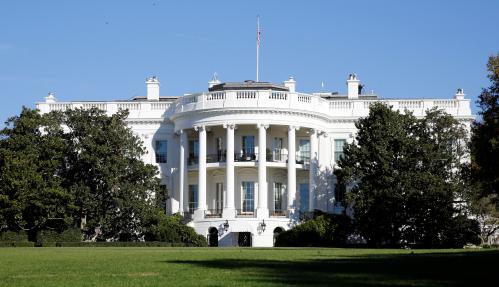
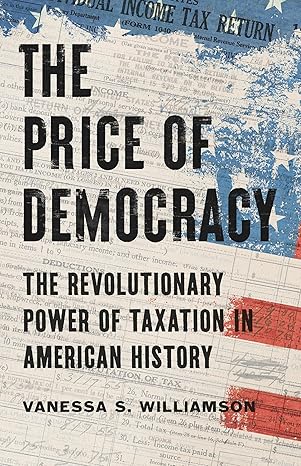

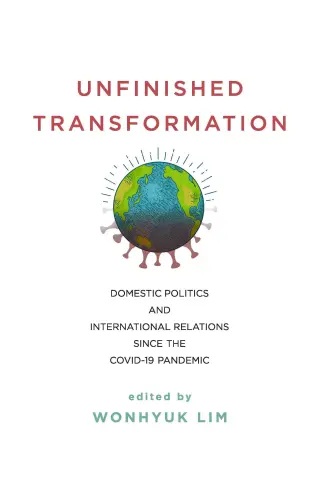
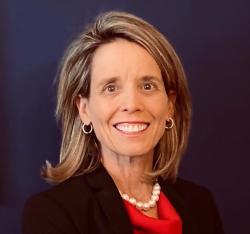
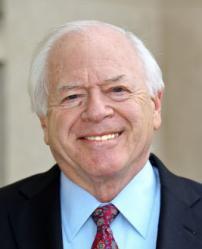



Commentary
The Contemporary Presidency: The Bush White House: First Appraisals
September 1, 2002